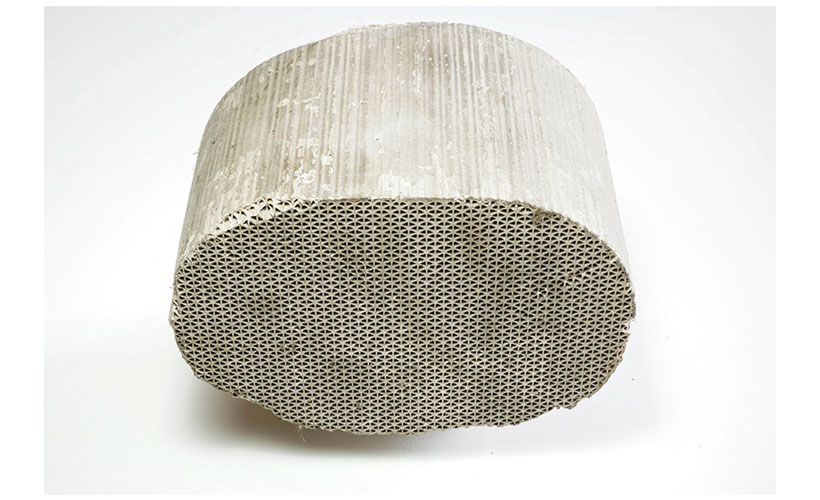PGMs in the environment
The addition of catalytic converters to automobiles successfully reduced the levels of harmful pollutants emitted by cars and other vehicles with internal combustion engines. In use, tiny amounts of PGM within the autocatalyst become detached and are emitted with the exhaust gas into the environment. Although these amounts are extremely small, the high number of vehicles fitted with catalytic converters raised questions about whether it poses a risk to human health or the environment.
The principal concern was whether platinum might be emitted as or subsequently converted in the environment into a reactive chloroplatinate compound capable of causing respiratory sensitisation. To address this question, IPA sponsored more advanced research than had previously been attempted.

The research demonstrated that the concerns were unfounded. Extensive work by the University of Wisconsin on a variety of new and used catalytic converters, air samples, and soil samples, showed that levels of chloroplatinates are vanishingly low. Chloroplatinates extractable from catalytic converters were at the level of parts per billion, while levels of possible chloroplatinates in air samples collected from several European cities were at levels of less than 10 picograms per cubic metre of air (a picogram is a millionth of a millionth of a gram), which is more than 200,000 times lower than the occupational exposure limit for chloroplatinates.

Further information can be found in the following summaries.
Concentrations and speciation of platinum in vehicle exhaust catalysts
IPA sponsored a research programme by the University of Wisconsin to confirm the speciation of platinum within Vehicle Exhaust Catalyts (VEC). Testing of various new and aged VECs with a selection of extraction fluids confirmed that less than 1% of the platinum present in the VEC could be extracted, and that the amount of chloroplatinate extractable was about 0.00005-0.0005% of the total platinum in the VEC.
Concentrations and speciation of platinum in urban air
Many published scientific studies report concentrations of platinum within environmental media, including soil, water and air. A severe limitation of these studies is that they measure only the total metal. Despite the very low levels found, in the absence of knowledge about what form the platinum is in, some researchers assume that the platinum may have the potential to cause respiratory sensitisation.
IPA therefore sponsored a more advanced programme of research by the University of Wisconsin to confirm not only the levels of platinum within urban air samples from six European cities, but to also determine what proportion might be in the form of chloroplatinates – the form of platinum that can cause respiratory sensitisation. This testing showed that concentrations of anionic dissolved platinum (of which chloroplatinate compounds might form a part) in the urban air samples were at levels of less than 10 picograms per cubic metre of air, i.e. more than 200,000 times lower than the occupational exposure limit for chloroplatinates.






